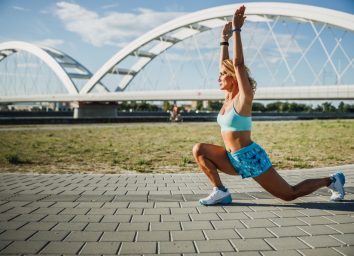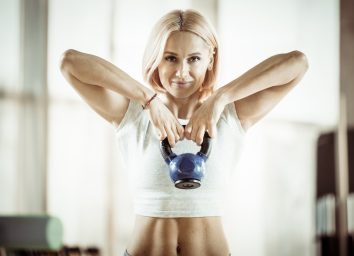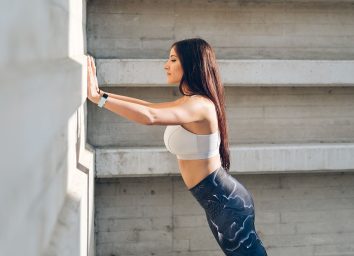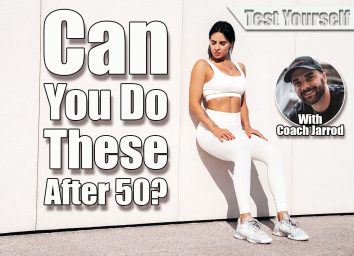If You Can Complete These 7 Standing Exercises Without Resting, Your Strength Is Top-Tier After 50
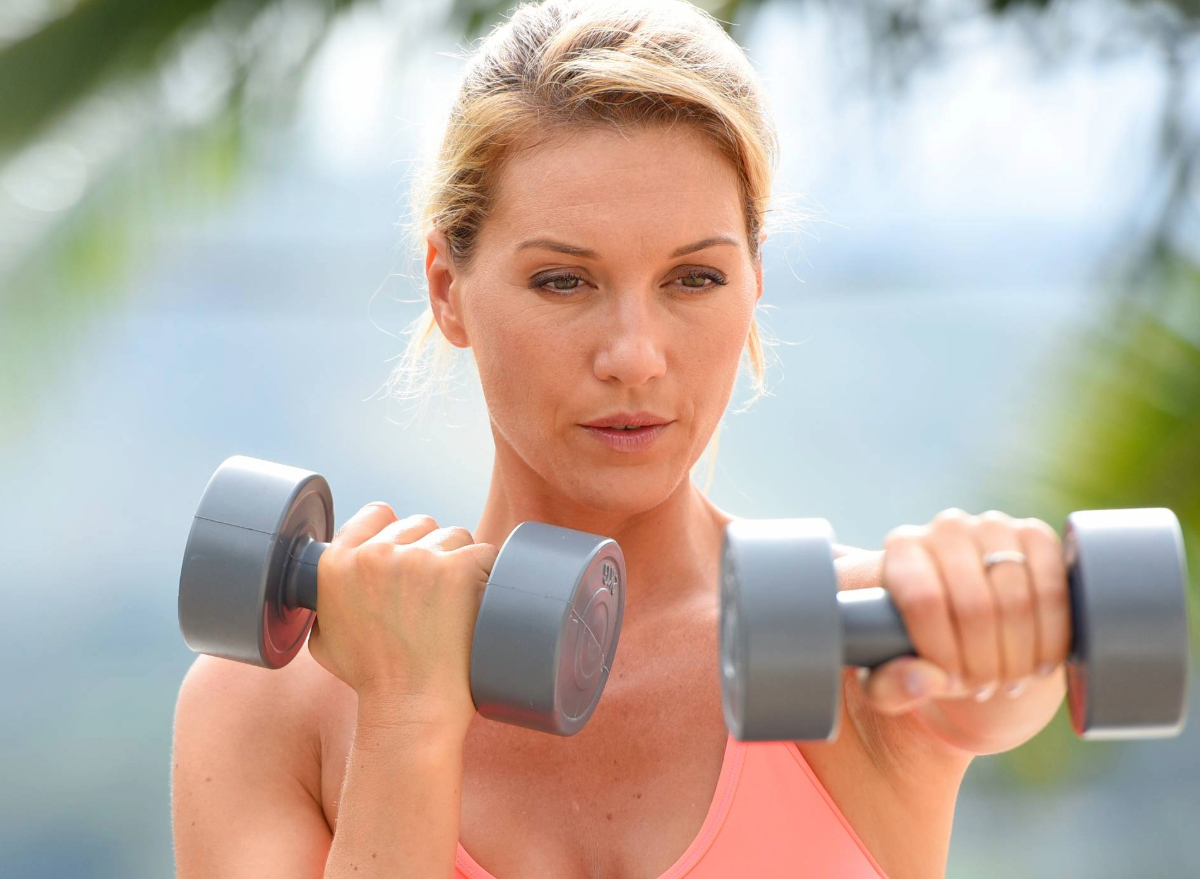
As you age, the natural loss of lean muscle becomes more of a glaring reality—especially without regular strength training. This beneficial workout modality helps preserve balance, bone density, and muscle mass, notes Theresa Rowe, nationally certified fitness pro with years of experience in personal training, group fitness, Pilates, senior strength, and more. Beyond physical benefits, resistance training strengthens the mind as well, helping improve focus, mood, and mental clarity. So, we’ve rounded up seven stellar standing exercises that, if completed without resting, signal top-tier strength after 50.
“Strength isn’t about trying to stop aging—it’s about staying vibrant in body, mind, and spirit so we can live with purpose and invest in the next generation,” Rowe tells us. “When we move our bodies, we renew our minds and remind ourselves that we’re capable of more than we think.”
The benefits of boosting strength go beyond aesthetics.
“In addition to feeling more toned, strength training improves bone density, supports metabolic health, enhances coordination, and protects against falling—which is the leading cause of injury and injury-related death among those over 50,” explains Clif Marshall, senior director of coaching and pro training at D1 Training. “Building strength also stimulates the nervous system, keeping reflexes sharp and movement efficient, which directly contributes to better balance and stability. These factors combined determine longevity – if your reflexes are sharp, muscles are strong, and metabolism, balance, and coordination are intact, you are prone to a healthier life.”
5 Standing Exercises That Show Top-Tier Strength After 50
Standing Overhead Press and Calf Raise
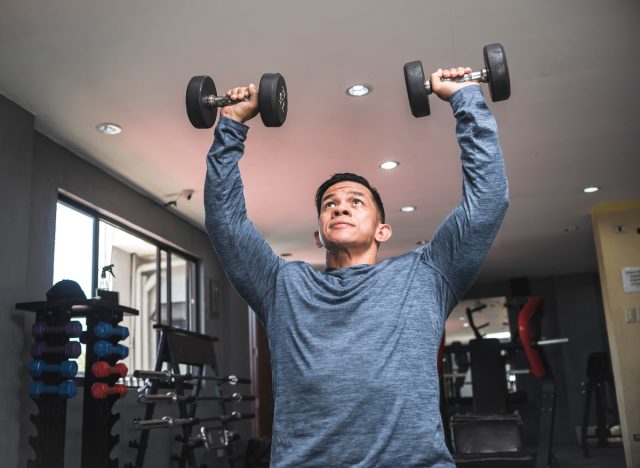
“This exercise combines upper-body and lower-body strength while improving posture and balance,” Rowe tells us.
- Hold a dumbbell in each hand at shoulder level, palms facing inward.
- Press the weights overhead, extending your arms.
- As you press the dumbbells, lift your heels to perform a calf raise.
- Use control as you lower the weights to shoulder height and lower your heels.
- Perform 2 to 3 sets of 10 to 12 reps.
Reverse Lunge and Front Raise
“This move strengthens the legs, glutes, and shoulders while improving coordination and balance,” Rowe points out.
- Stand tall, feet hip-width apart, holding a dumbbell in each hand at your sides.
- Step one foot back and lower into a reverse lunge.
- As you descend, lift the dumbbells straight in front of you to shoulder height, keeping your arms extended.
- Lower the dumbbells as you press through your front heel to return to standing.
- Perform 2 to 3 sets of 8 to 10 reps on each side.
Lat Pulldown With Stretch Band and Alternating Knee Drive
This exercise puts your pulling strength and core stability to the test.
- Anchor a resistance band overhead onto a pull-up bar.
- Hold an end of the band in each hand, arms lengthened overhead, and stand tall, feet hip-width apart.
- Activate your core and pull the band down toward your chest, bringing your elbows in toward your sides.
- At the same time, lift one knee up to your chest, maintaining a stable torso.
- Use control to return to the start position.
- Repeat on the other side.
- Perform 2 to 3 sets of 12 to 15 reps.
Standing Squat and Side Leg Lift With Bicep Curl
“This compound move engages multiple muscle groups at once, building real-world strength and mobility,” Rowe explains. “[It also] blends lower-body power and upper-body endurance with balance and coordination.”
- Stand tall, feet hip-width apart, holding a dumbbell in each hand, palms facing forward.
- Bend your knees and hinge at the hips to lower into a squat.
- At the same time, perform a bicep curl while lifting your right leg out to the side.
- Lower your arms and leg back to the start position.
- Perform 2 to 3 sets of 8 to 10 reps on each side.
Reverse Lunge With Bicep Curl
“This final exercise engages the legs, glutes, arms, and core simultaneously, testing both strength and stability while promoting smooth, functional movement patterns,” Rowe tells us.
- Stand tall, holding a dumbbell in each hand.
- Step back into a reverse lunge.
- Curl the dumbbells up toward your chest as you rise up.
- Perform 2 to 3 sets of 8 to 10 reps per side.
Goblet Squat
“These exercises are key to building and testing leg strength, improving posture, and increasing core activation,” says Marshall. “When performing [this exercise], it’s essential to control the weight on the way down using a slow three-second count (“3-2-1″). This ensures adequate time under tension, a key factor in promoting muscle growth, and helps prevent injuries by reinforcing proper technique.”
- Hold a kettlebell or dumbbell in front of your chest.
- Slowly squat, keeping your torso tall and knees behind your toes.
- Press back up.
- Perform 3 sets of 10 reps with a weight that’s challenging yet manageable.
Dumbbell Farmers Walk
“These test grip strength, posture, and endurance,” Marshall tells us.
- Stand tall with one kettlebell or dumbbell next to each other on the ground.
- Squat down, picking up a weight in each hand.
- Activate your core and shoulders to rise back up.
- Step forward as you begin to walk, head tall and shoulders back.
- The goal is to carry half of your body weight in total for 3 rounds of 10 to 20 yards.
